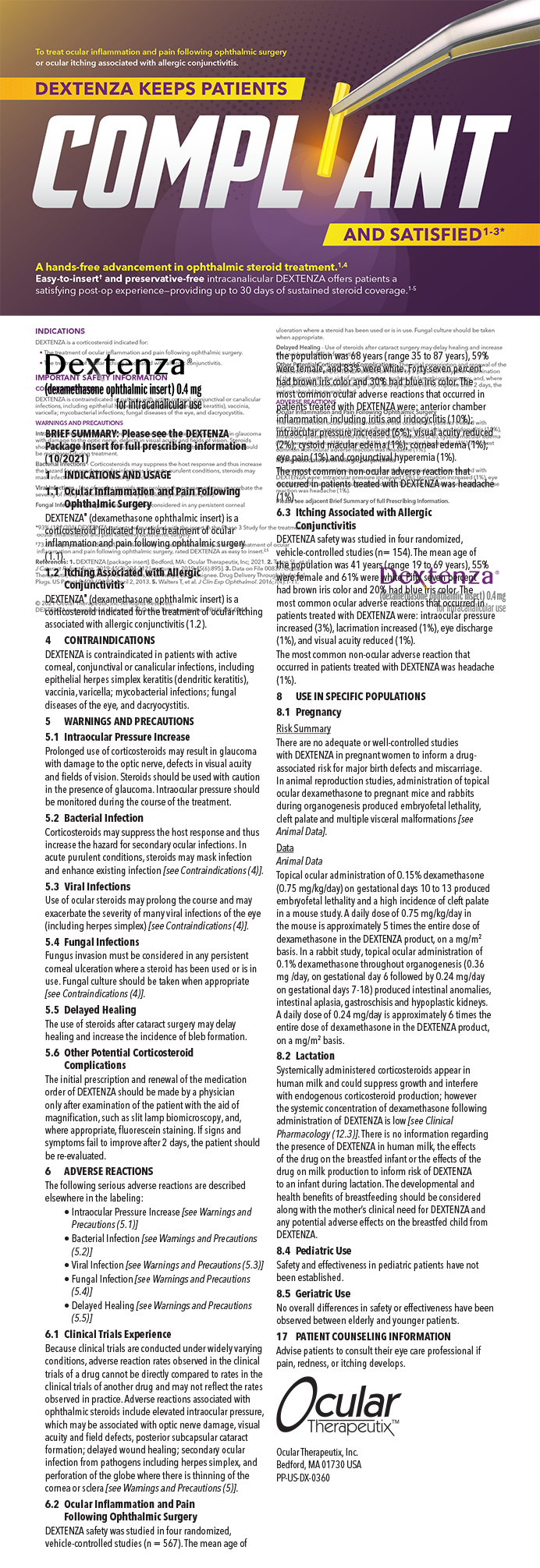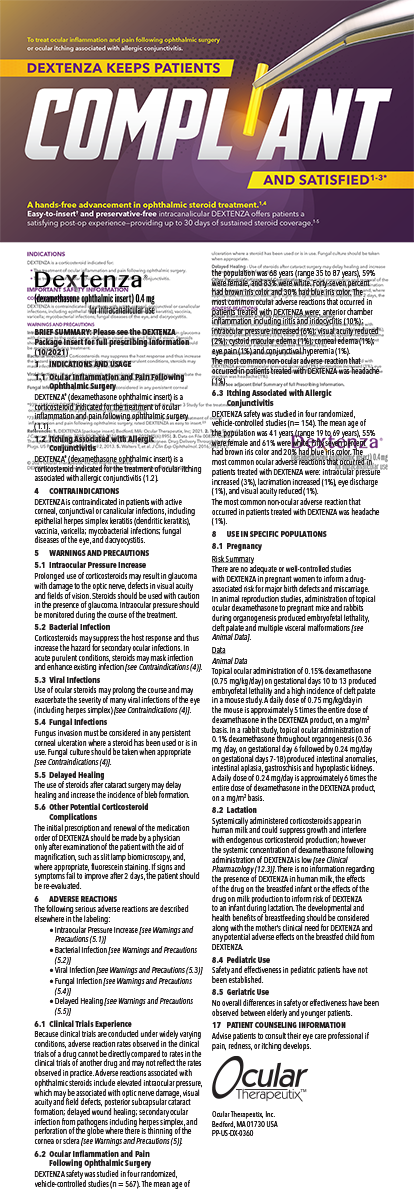Refractive cataract surgery is quickly becoming its own ophthalmic subspecialty. The explosion in technology during the past 5 years, aimed at helping ophthalmologists achieve better uncorrected visual acuity for cataract patients, is unprecedented in the history of the profession. Advanced optical and laser biometry, sophisticated preoperative diagnostic testing, IOL calculation and selection apps or websites, femtosecond lasers, new phaco machines, microincisional cataract instrumentation and IOLs, an expanding selection of toric IOLs, multifocal IOLs, and accommodating IOLs are just a few of the newer technologies ophthalmologists have.
One of the most fascinating subspaces in refractive cataract surgery is beginning to catch the attention of innovative surgeons. It involves the tools and devices designed to deliver intraoperative guidance. The expansion of the clinical setting into the OR via diagnostic devices that go hand-in-hand with surgical procedures is underway. These novel systems are to be used while the surgeon is operating in order to provide feedback, data, and visual guidance for such things as IOL power selection, the placement of limbal relaxing incisions (LRIs), the axial positioning toric IOLs, and IOL centration.
A few of the devices are commercially available, with several more nearing launch or in the near-term development pipeline. The purpose of this article is to examine some of these amazing products. In 2009 at the American Society of Cataract & Refractive Surgery (ASCRS) Charles D. Kelman Innovators Lecture, Robert Osher, MD, gave a sneak peak into this world of guidance when he first described an “iris fingerprinting” technique to accurately mark the proper toric IOL axis. Since that time, the space has exploded with at least half a dozen devices poised to help ophthalmologists deliver more precise refractive outcomes during cataract surgery.
ORA
The ORA System (WaveTec Vision) is likely the most evolved of the technologies in this category and is now used by roughly 150 practices, according to the company, mostly in the United States. I was first exposed to the device in 2007 when it was a prototype. I have participated in many clinical studies to validate its accuracy, predictability, and impact on outcomes. The device was first called ORange and then renamed ORA after several significant hardware and software improvements. The company says that more than 140,000 cataract procedures have been performed using the device to date (Figure 1).
The device’s image-capture unit connects to the bottom of the surgical microscope and employs Talbot- Moiré interferometry to measure the refractive state of the eye during surgery. ORA can capture refractive data about the eye in the aphakic and pseudophakic state, which are then displayed via a touchscreen on a standalone cart. The data are shown as a refraction with sphere, cylinder, and axis. Using proprietary biometric formulas and customized nomograms, I can use the aphakic data to select the proper IOL power for the patient. Pseudophakic data are helpful in positioning toric IOLs, manually placing LRIs, and titrating the opening of laser-created LRIs. This technology is proving to be especially useful in long and short eyes as well as postcorneal refractive surgery cases where obtaining accurate keratometric values can be a challenge. Dozens of studies have shown that the ORA improves the refractive outcomes of cataract surgery.1
The next innovative ORA feature is slated to be released at the American Academy of Ophthalmology annual meeting in the fall. The dynamic reticle displays the real-time streaming ORA refractive data through the oculars of the microscope. This will make its use even more ergomically friendly and reduce the need to look at the screen on the ORA cart.
TrueGuide
The TrueGuide Computer-Guided System (TrueVision 3D Surgical) is another surgical guidance technology. I first began performing live, heads-up, three-dimensional (3-D) surgery with a prototype in 2007. The device is now fully integrated into the Leica microscope (Leica Microsystems) with a high-definition 3-D heads-up viewing system. All systems come with 3-D and 2-D recording/editing capabilities, and standalone TrueVision 3-D units can be configured to any existing microscope setup. In 2010, the TrueGuide surgical guidance software received FDA 510(k) clearance (then called the Refractive Cataract Toolset) for use as a dynamic guidance and planning tool in cataract and corneal surgery (Figure 2).
A preoperative undilated-pupil slit-lamp image of the eye is digitally imported and registered to the live surgical 3-D view in the OR to compensate for any cyclotorsion. A 3-D slit-lamp image can be used. Alternatively, now, the system works with the Cassini color light-emitting diode corneal analyzer (i-Optics). When thus integrated, the TrueVision 3-D system can provide topographic and astigmatic values as well as a high-resolution color image of the eye and an iris-recognition image of the iris used for automated cyclotorsion registration and real-time eye tracking. The surgeon can use iris features and conjunctival vessels to make minor adjustments on the fly.
With live 3-D tracking, I can look at the eye in 3-D on the screen. A variety of digital overlays can be preferentially and sequentially displayed on the eye to facilitate key steps throughout the case. Currently, software templating is available to guide the capsulorhexis’ size and location, manual LRI arcs/optical zone/axis/length, and toric IOL alignment. In addition, the undilated image overlay helps me to find the pupillary center for the IOL’s centration, which is especially useful with multifocal implants.
The surgeon has the option to look at the 3-D screen or through oculars when using TrueVision. A growing number of anterior segment surgeons, as well as a few innovative retina surgeons, are transitioning to heads-up 3-D guided surgery with no need for the traditional oculars. The latest integration announced at the recent ASCRS meeting in Boston for this technology is the combination of the TrueGuide surgical planning software and the Cassini corneal data (Figure 3) and iris imaging into the Lensar Laser (Lensar) to help surgeons plan the placement of laser incisions and account for cyclotorsion.
VERION
The Verion Image Guided system (Alcon) recently became available (Figure 4). It consists of a preoperative Reference Unit and planning device that capture and use a high-resolution image of the patient’s eye to determine the keratometry values, limbal diameter, pupillary size and location, and other biometric data. Surgical planning software helps surgeons develop treatment plans for the LenSx Laser System (Alcon) in terms of wound construction, laser corneal refractive arcuate incisions, toric IOL positioning, and IOL power selection. Some of these data can be fed into the compatible LenSx to program the capsulorhexis, wound, and arcuate laser treatments and to account for cyclotorsion errors while the eye is docked at the laser.
After the laser treatment, the image and data are fed into the Verion Digital Marker Unit in the OR, where the device is linked to the surgical microscope. The system is intended to compensate for cyclotorsion errors and to guide the capsulorhexis’ size and centration on the pupil or visual axis, accurate axial positioning of the toric IOL, and IOL centration. The guidance data can be displayed either on a 2-D screen or through the microscope oculars of the LuxOR surgical microscope (Alcon). The Verion also includes wireless foot pedal communication with the Centurion Vision System (Alcon). A few surgeons who are beta testing the device have commented to me on its ease of use and its rapid integration into the surgical flow.
CALLISTO
The Callisto Eye (Carl Zeiss Meditec; Figure 5) is a commerically available guidance system that is designed to intergrate into other Zeiss products such as the IOLMaster and the Lumera microscope. Callisto functions like a bridge: it links these two devices, thus allowing the surgeon to feed preoperative biometric data and plans in the OR, where information can be displayed either through the oculars or on a screen attached to the microscope. The Lumera’s foot pedal can be used to control the visualization of the different guidance tools in the oculars, and an integrated tracking system ensures the digital, overlayed templates adjust for changes in ocular movement. The surgical assistance functions include incisions/LRIs, capsulorhexis, and toric IOL alignment. The K Track feature is unique in that it lets surgeons visualize corneal curvature via a built-in keratoscope. This may prove helpful in cases such as corneal transplants. In addition, the system allows visualization of the biometric data captured preoperatively by the IOLMaster. Two-dimensional recording and editing features are available, which are useful for education and for reviewing cases.
HOLOS INTRAOP
The Holos IntraOp (Clarity Medical Systems; Figure 6) is a guidance tool that falls into the subgroup of intraoperative aberrometers. It has been under development for several years, and the system was launched commercially at the 2013 American Academy of Ophthalmology Annual Meeting. Much like the ORA, Holos is designed to take real-time refractions of the eye during surgery in both the aphakic and pseudphakic states. The aphakic readings are intended to guide the correct IOL power selection, and the pseudphakic readings can help the surgeon manage arcuate incisions and position toric IOLs to leave the eye with as little astigmatism as possible at the end of the case. The wavefront measurements obtained by Holos are unique in the way the system can capture select regions of the wavefront with detailed algorithmic data analysis. Many surgeons are anxiously awaiting the wider commercial release of this device, beyond the initial investigator surgeons, to see how it compares with ORA. Regardless, it is clear that surgeons’ interest in the intraoperative acquisition of refractive and biometric data is increasing.
CIRLE’S SURGICAL NAVIGATION SYSTEM
Developed by Richard Awdeh, MD, and now exclusively licensed by Bausch + Lomb, Cirle’s surgical navigation system (not yet commerically available; Figure 7) is designed to provide 3-D guidance using microscope oculars during cataract surgery. The system automatically projects 3-D reference points, reticles, and guidance templates through the microscope oculars. As the ophthalmologist looks at the surgical field of the eye, the digital graphics track the eye and appear to be free-floating above the eye in 3-D within the microscope oculars. This is due to Cirle’s proprietary Holotagging image guides and StereoCapture image-acquisition technology. The system has a standalone cart with a large touch screen display that surgeons use to plan and control the various software features and to view preoperative biometrics and other pertinent data. There is also a surgeon-controlled foot pedal to toggle on and off the different digital features visualized through the oculars.
I had an opportunity to evaluate the device at ASCRS and was extremely impressed with the 3-D in ocular overlays and the intuitive graphical user interface and touchscreen.
CONCLUSION
During the next few years, intraoperative guidance will likely become more common in the OR, and I hope the devices’ use will lead to better refractive outcomes for patients. Will the same percentage of patients who achieve visual acuities of 20/20 after cataract surgery ever be as high as it is after LASIK? The answer has yet to be determined, but continued innovation and new technologies, like the ones described herein, are a step in the right direction.
Robert J. Weinstock, MD, is a cataract and refractive surgeon in practice at The Eye Institute of West Florida in Largo, Florida. He is a consultant to Alcon, Bausch + Lomb, Lensar, Leica, TrueVision, and WaveTec Vision. Dr. Weinstock may be reached at (727) 585-6644; rjweinstock@yahoo.com.
- Ianchulev T, Hoffer KJ, Yoo SH, et al. Intraoperative refractive biometry for predicting intraocular lens power calculation after prior myopic refractive surgery. Ophthalmology. 2014;121(1):56-60.


